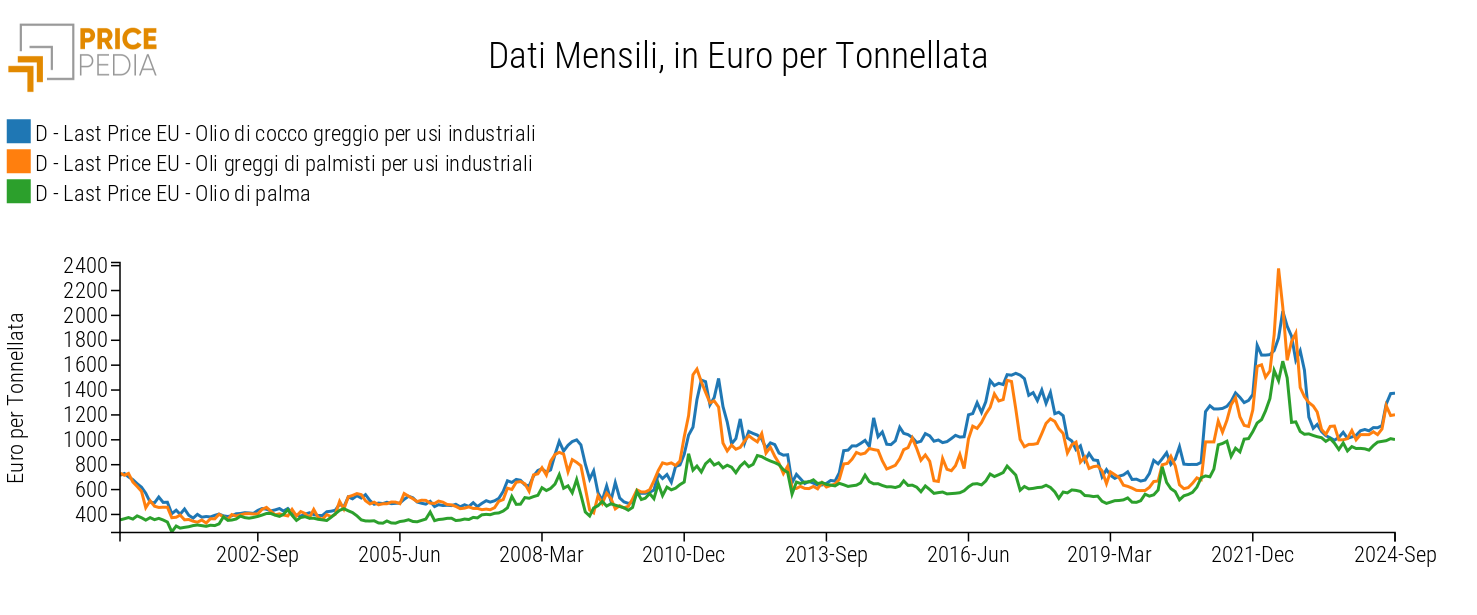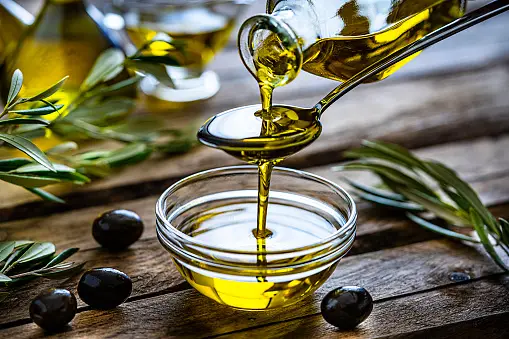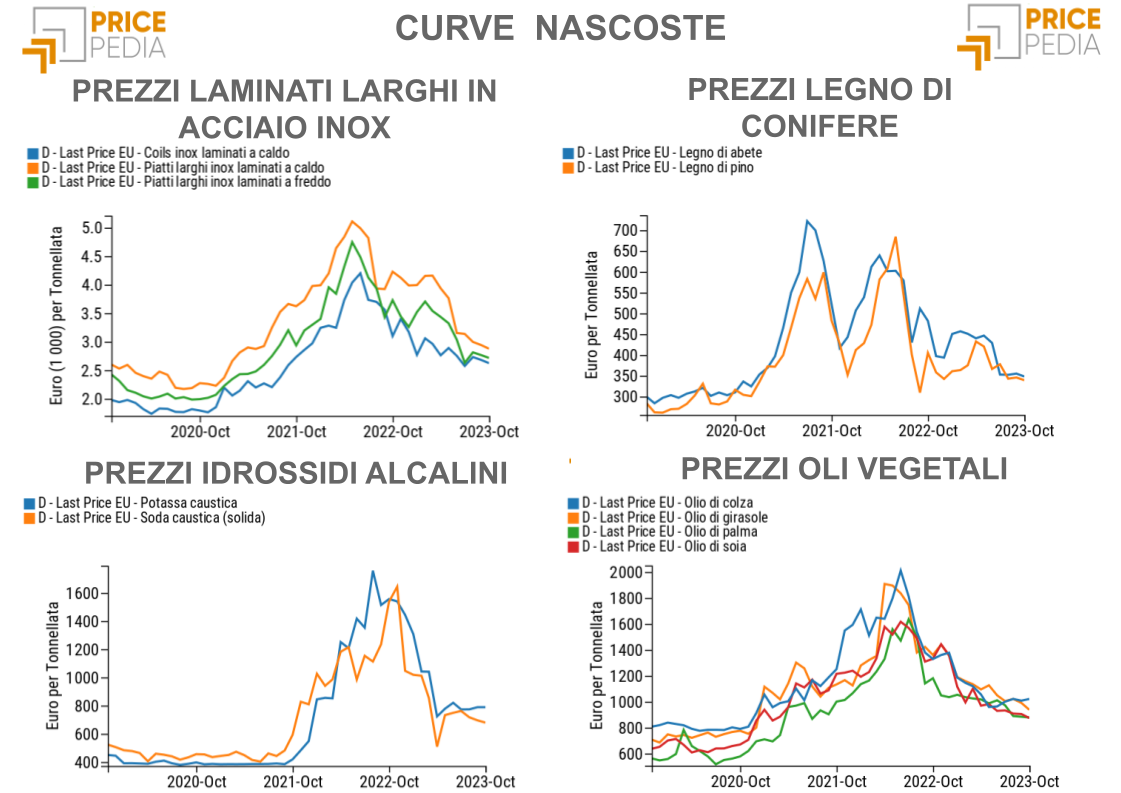Substitutability of raw materials in the cosmetic industry
The case of coconut oil and palm kernel oil
Published by Pasquale Marzano. .
Vegetable oils Analysis tools and methodologies
Vegetable oils have a high substitutability in terms of product characteristics and uses, resulting in a strong price correlation, as described in the article Sunflower Oil: Analysis of the Effects of the Russia-Ukraine Conflict, where the relationship between the prices of palm, soybean, rapeseed, and sunflower oils for industrial food uses was discussed.
A similar degree of substitutability also applies to vegetable oils intended for technical or industrial uses, such as coconut oil and palm kernel oil. Coconut oil is extracted from the dried flesh (also known as copra) of the coconut, while palm kernel oil is obtained from the kernels of oil palms (the same plant that produces palm oil). Both are used in the cosmetic industry for soap and detergent production. Additionally, coconut oil is used as a raw material for fatty acids, fatty alcohols, and methyl esters.
Do you want to stay up-to-date on commodity market trends?
Sign up for PricePedia newsletter: it's free!
The following chart illustrates the price trends from customs sources for the two oils intended for industrial uses[1] along with palm oil, expressed in euros per ton.

The prices of coconut oil and palm kernel oil for industrial uses share common trends, which are partially shared by palm oil. The former experienced significant price increase cycles during the period from 2010 to 2017, while palm oil, during the same period, followed a slightly declining trend. In the most recent price increase cycle from 2021 to 2022, all three considered prices showed a similar trend.
An Analysis of Price Levels
Compared to palm oil, coconut oil and palm kernel oil have higher price levels, on average, about 30% higher, justified by the superior qualities of the latter. They contain a higher level of lauric acid, an important fatty acid with antibacterial and emollient properties.
The following table shows the annual price levels of crude and refined coconut and palm kernel oils over the past 5 years, expressed in euros per ton.
| 2020 | 2021 | 2022 | 2023 | 2024 | |
|---|---|---|---|---|---|
| D-Last Price EU-Raw coconut oil for industrial uses | 834 | 1294 | 1753 | 1055 | 1175 |
| D-Last Price EU-Coconut oil for industrial uses | 992 | 1431 | 1904 | 1512 | 1537 |
| D-Last Price EU-Crude palm kernel oil for industrial use | 707 | 1132 | 1716 | 1102 | 1110 |
| D-Last Price EU-Palm kernel oil | 907 | 1280 | 1926 | 1415 | 1394 |
From the comparison of levels, a positive differential between refined and corresponding crude products emerges, justified by the higher purity of the former compared to the latter.
In the case of coconut oil, in recent years, the differential has increased from just under 200 euros per ton to over 350 in the last two years. As for palm kernel oil, the differential between the refined and crude product has remained relatively constant, around 200 euros per ton.
Conclusions
Vegetable oils are considered versatile products, easily interchangeable with one another depending on their various uses due to their characteristics. In the case of coconut oil and palm kernel oil, they are substitutes in the uses of the cosmetic industry and the chemical industry in general, with similar price levels and correlated trends.
One factor that could alter the relationship between the two prices in the near future is the implementation of the European Regulation on Deforestation (EUDR). This regulation is the EU's attempt to block the introduction of products originating from deforested areas into the European market. Among the products subject to EUDR are palm kernel oil, as well as palm oil, and their derivatives, such as fatty acids and alcohols. Coconut oil, however, is excluded from this regulation, which could lead to an increase in its demand.
1. The prices of coconut and palm kernel oils, both crude and refined, will be added in the coming days to the EU Customs section.


